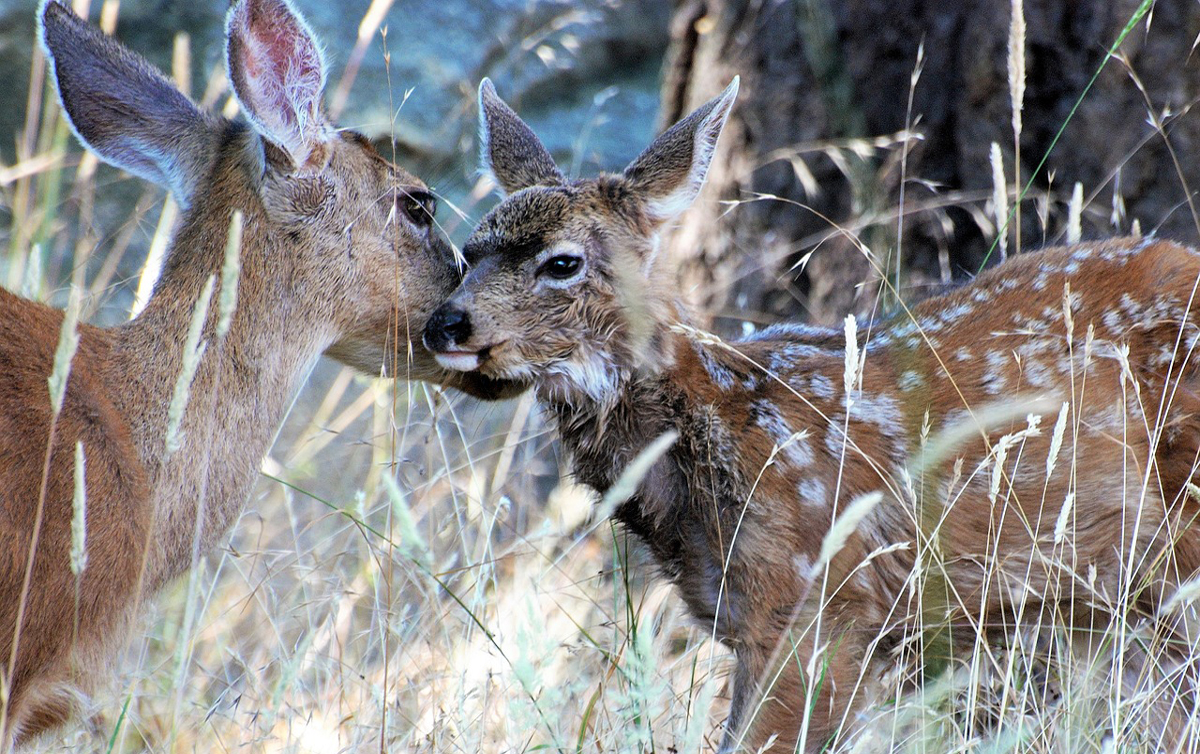
Research grants awarded for Utah big game migration corridors
Funding will help researches collar and track 120 deer
On Oct. 5, U.S. Secretary of the Interior Ryan Zinke announced over $230,000 in research grant funding awarded for three state-identified research priority projects into big game migration corridors in Utah. The funding comes as a result of Secretarial Order 3362, which aims to improve the federal government’s collaboration with the states to enhance and improve the quality of big-game winter range and migration corridor habitat.
Zinke asked states to submit their top priorities to advance big game habitat conservation. The No. 1 research need identified by the state of Utah is associated with the impact of highways and increasing housing development. Additionally, their No. 2 and 3 research priorities seek to identify corridors or better define winter range due to concerns associated with rapid growth and housing development, highways, and juniper encroachment.
“Earlier this year, I was tagging and collaring mule deer in a neighborhood south of Salt Lake City which didn’t exist 10 years ago,” said Zinke. “This rapid expansion and development makes it all the more important that we fund important research projects like these to identify and better define migration corridors. These grants will allow the state to conduct research to understand how deer move and migrate within Utah. Once we can scientifically establish or better define the migration routes, it will allow us to work in partnership and use the best science and innovation to conserve the important corridors on which mule deer populations rely.”
“Utah is one of the fastest growing states in the nation,” said Mike Fowlks, Utah Wildlife Division director. “With this rapid growth, we need to be nimble and progressive in our management and restoration programs to provide habitat and migration corridors for big game. Secretarial Order 3362 has been an incredible shot in the arm by helping us address several urgent research needs for big game in Utah. Information collected from these studies is being used to map migration corridors and plan projects, such as wildlife crossings that will preserve big-game movements for generations to come. I cannot stress enough how much the Secretarial Order can help the state of Utah maintain abundant populations of deer, elk, and pronghorn.”
The No. 1 research priority identified by Utah is focused on the mule deer population that migrates down from the Oquirrh Mountains into the Lake Mountains, where they spend their winter months. This migration corridor carries the mule deer population across the state highway that connects the City of Eagle Mountain with the Salt Lake City and Provo areas. Unfortunately, this migration corridor is impacted by rapid development occurring in the area.
Acting on the order, the Bureau of Land Management is providing funding to the Utah Division of Wildlife to capture and place Global Positioning System collars on 40 mule deer (20 does and 20 bucks) this winter. The GPS tracking collars will allow the Utah Division of Wildlife to accurately describe summer and winter range use as well as migratory movements and corridors, which ultimately will inform the Utah Department of Transportation.
The remaining two Utah priority projects are focused on the Zion and the Chalk Creek/Kamas Wildlife Management Units. The herds in both units are important to state wildlife managers and hunters alike. The Zion Unit hosts a deer herd that numbers over 15,000 individuals whereas the Chalk Creek/Kamas Unit hosts almost 20,000 mule deer. Using funding provided by the U.S. Fish and Wildlife Service, Utah biologists with the Utah Division of Wildlife will collar 80 mule deer in the Zion Unit to document seasonal ranges and migration corridors and 60 mule deer in the Chalk Creek/Kamas Unit to do the same.
Articles related to “Research grants awarded for Utah big game migration corridors”
How to prevent wildlife attacks: Let common sense overrule curiosity



